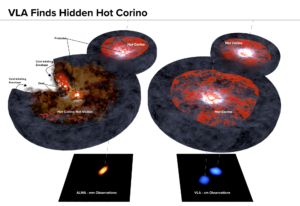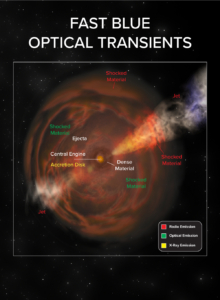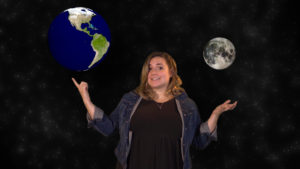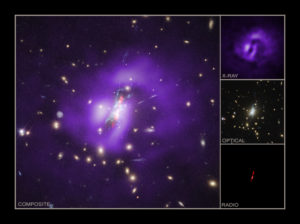Some young, still-forming stars are surrounded by regions of complex organic molecules called “hot corinos.” In some pairs of young stars forming together as binary pairs, astronomers found a hot corino around one, but not the other. Guessing that the unseen one might be obscured by dust, researchers studied such a pair with the VLA at radio wavelengths that readily pass through dust, and found the other one.
Astronomers Discover New Class of Cosmic Explosions
Analysis of two cosmic explosions indicates to astronomers that the pair, along with a puzzling blast from 2018, constitute a new type of event, with similarities to some supernovae and gamma-ray bursts, but also with significant differences.
How Newborn Stars Prepare for the Birth of Planets
An international team of astronomers used ALMA and the VLA to create more than three hundred images of planet-forming disks around very young stars in the Orion Clouds. These images reveal new details about the birthplaces of planets and the earliest stages of star formation.
Featured Video: Black Hole Eats Star
Join Melissa Hoffman of the National Radio Astronomy Observatory for a tour of one of the most disruptive events in Universe.
A Weakened Black Hole Allows its Galaxy to Awaken
Astronomers have found the first example of a galaxy cluster where large numbers of stars are being born at its core. The discovery revealed new details of how supermassive black holes affect their host galaxies.
First Canadian ALMA Large Program to Investigate the Impact of Galaxy Environment on Star Formation
The first ever Canadian-led Atacama Large Millimeter/submillimeter Array (ALMA) Large Program has been approved for cycle 7. Dr. Brown and his colleagues will use the Atacama Compact Array (ACA) to study the influence of galaxy environment on star formation in the Virgo Cluster.











